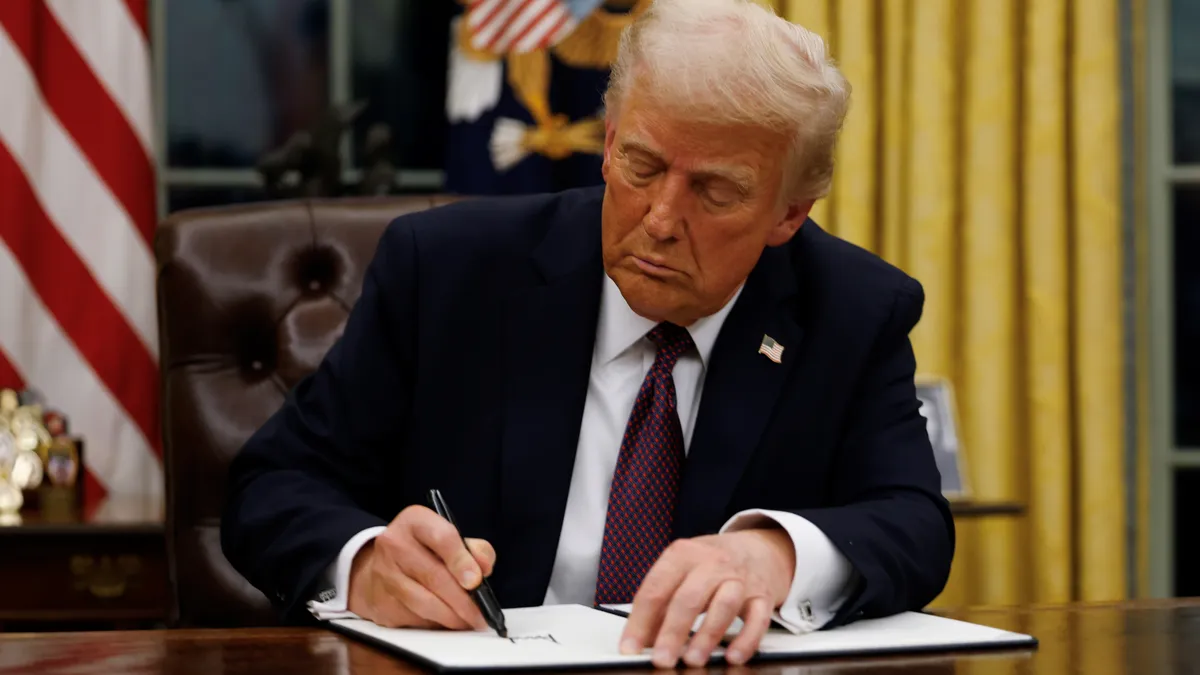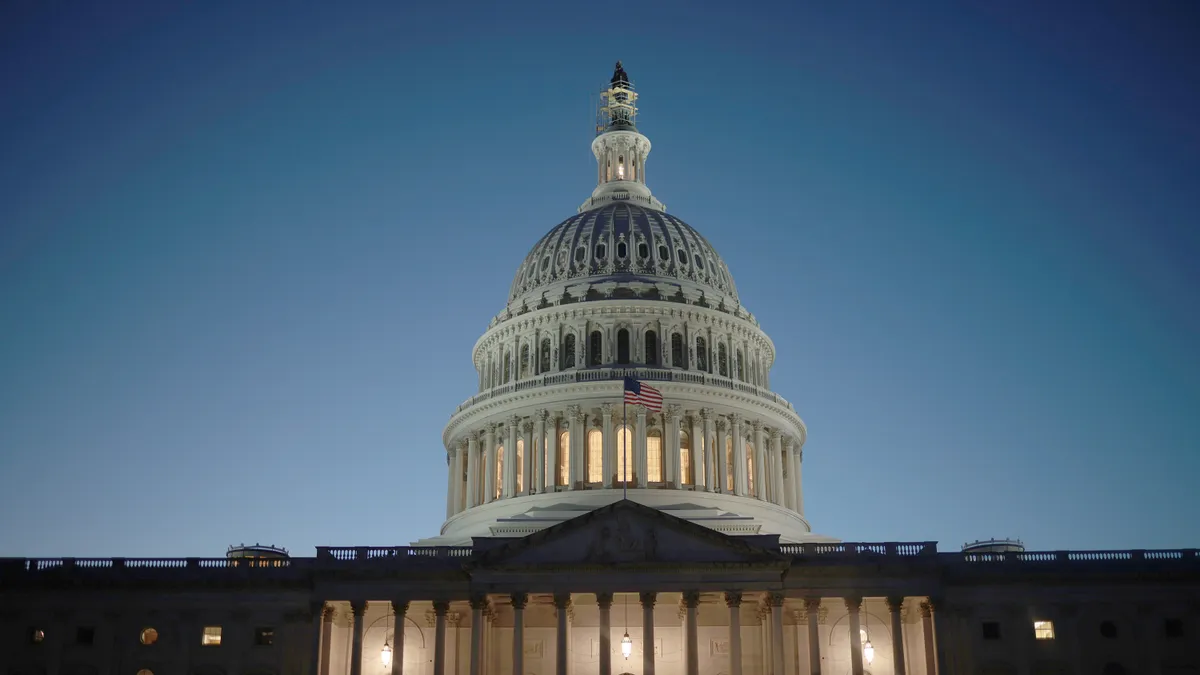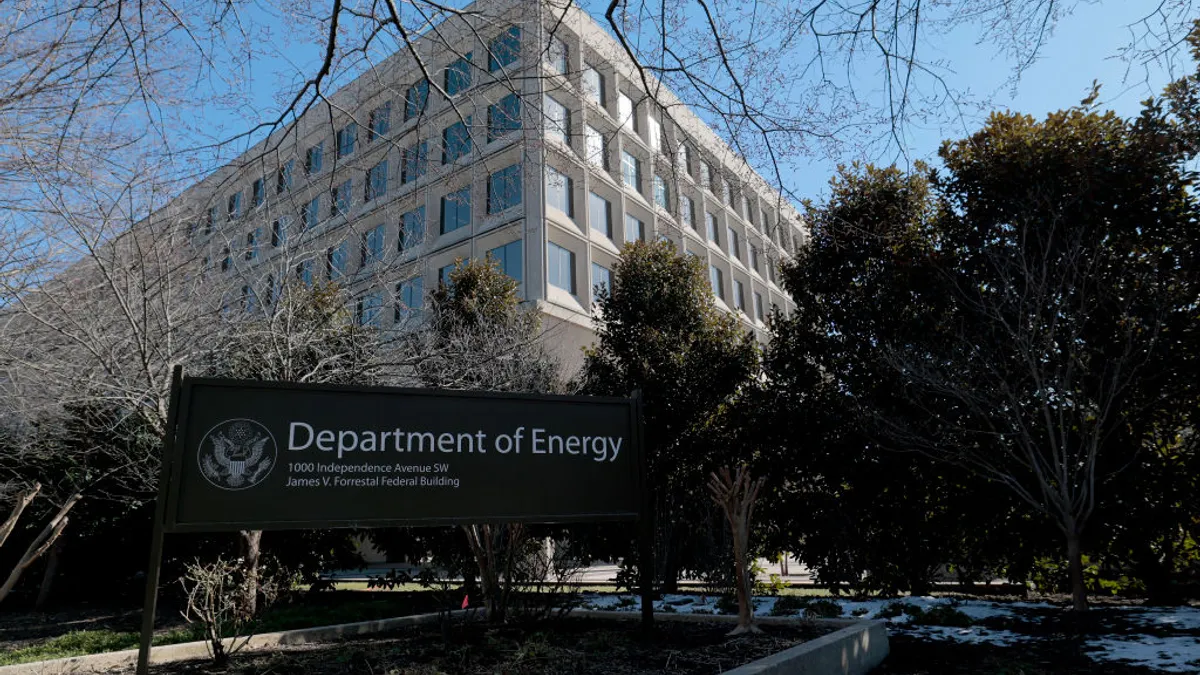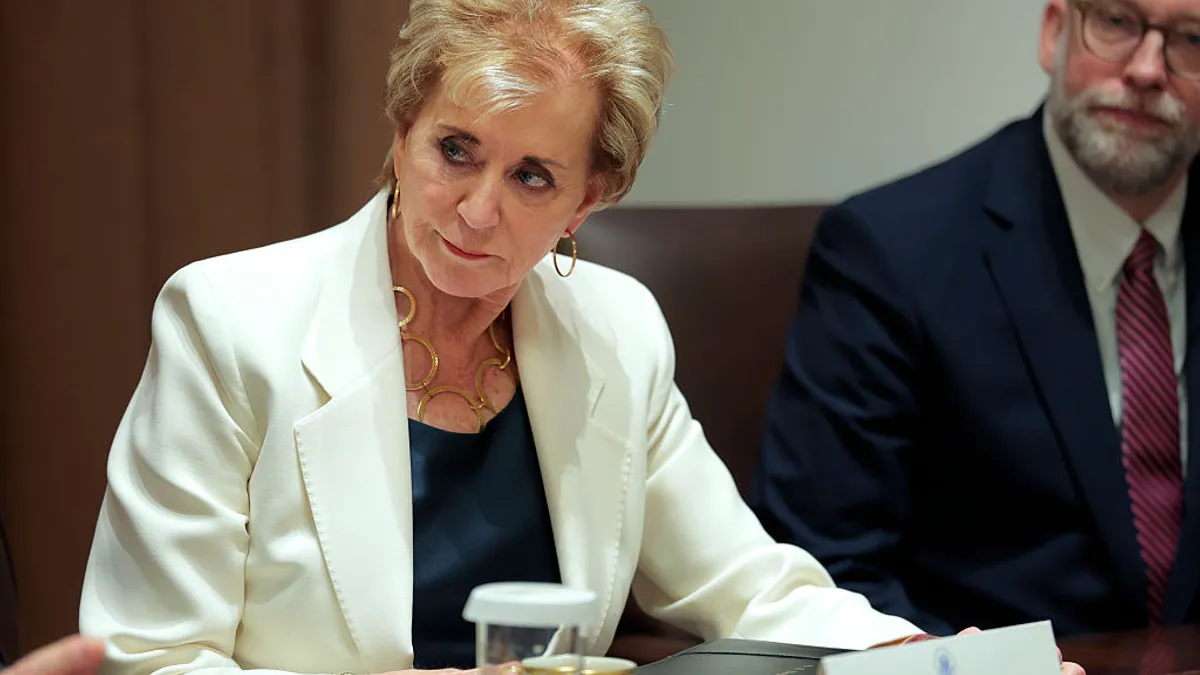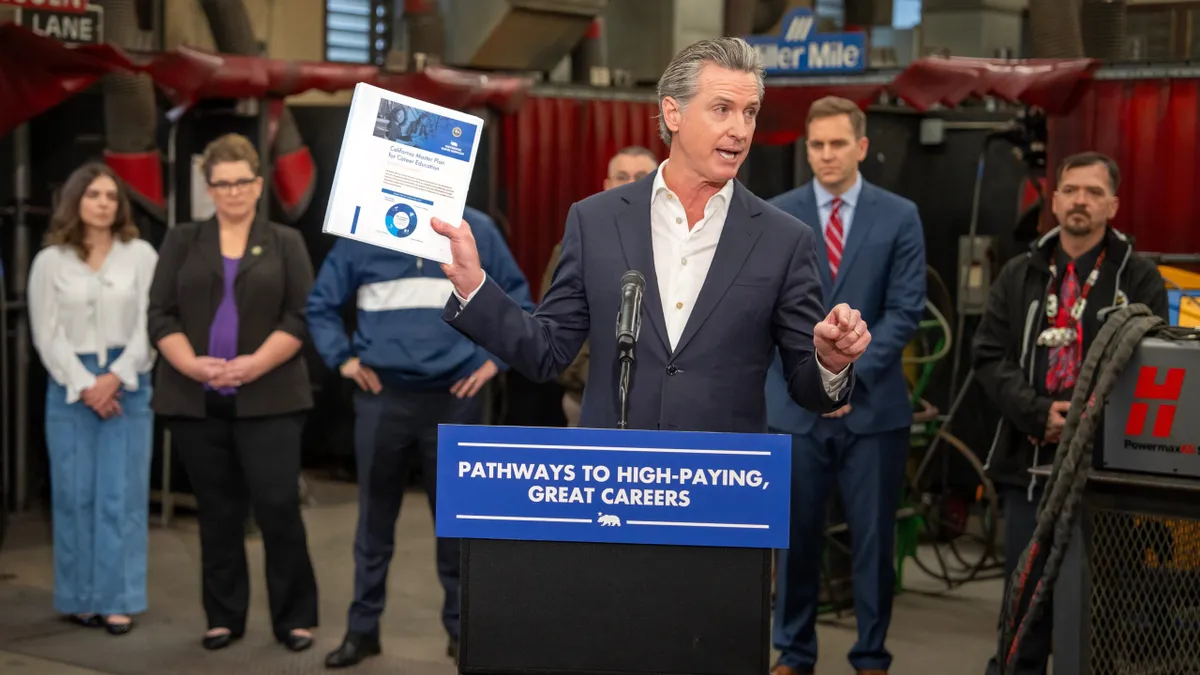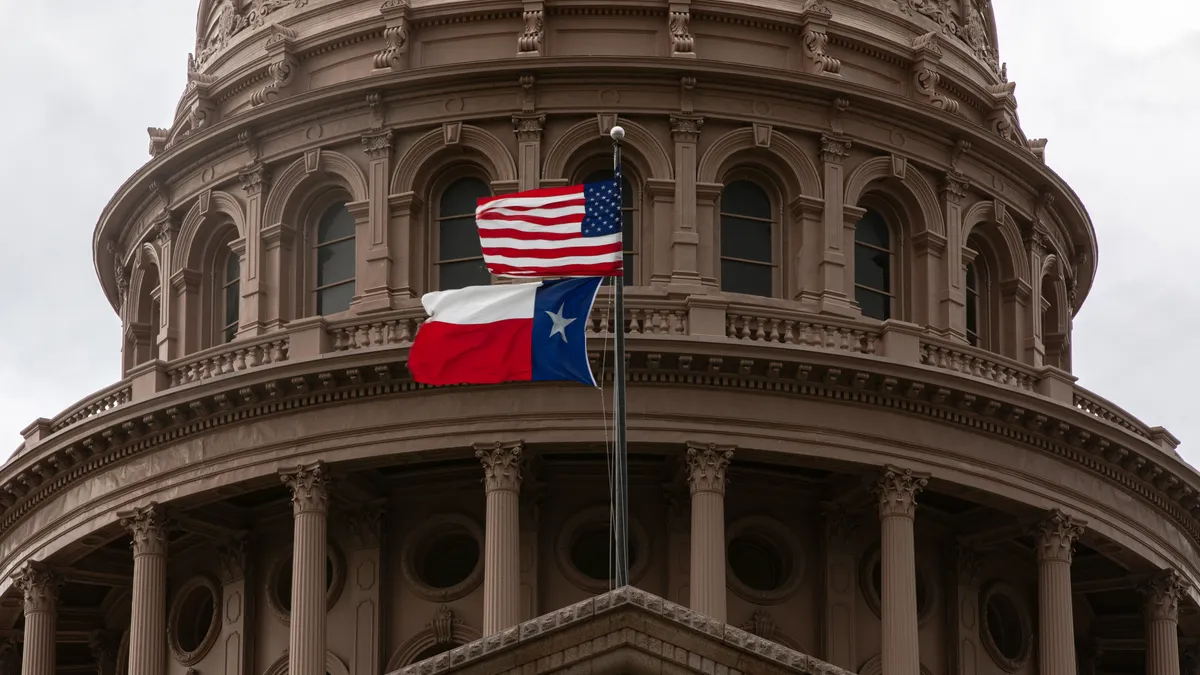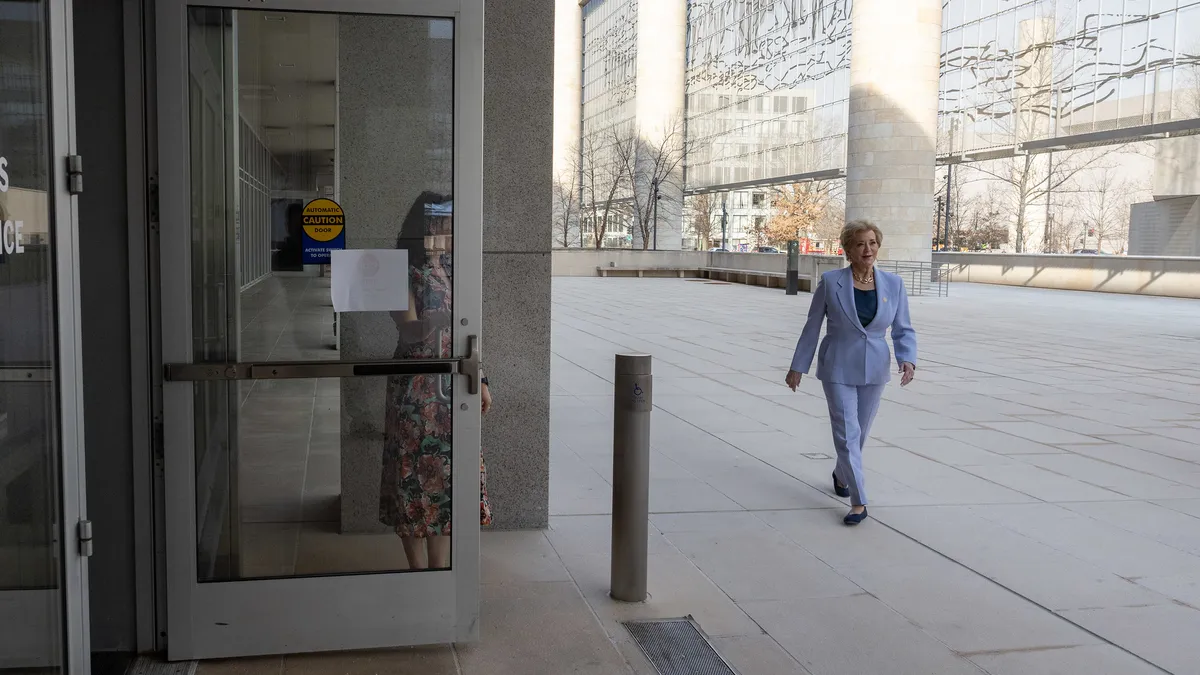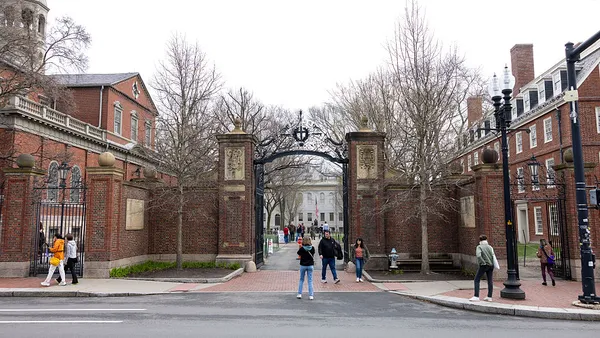College accreditation is in the spotlight. New rules from the U.S. Department of Education on how college oversight is handled went into effect this summer, and higher education professionals are split on their likely impact. While supporters say they encourage innovation, critics contend they give colleges more cover from scrutiny.
One of the most significant changes the rules bring about is the elimination of historical boundaries for regional accreditation, the most prestigious form of surveillance in U.S. higher education. They also loosen compliance standards for accreditors and make it easier for new accreditors to emerge.
Meanwhile, institutions are dealing with the impact of the coronavirus pandemic, which triggered rapid changes to their instructional models and highlighted inequities in students' access to college. The Education Department has allowed accreditors to offer colleges temporary flexibility to adapt. It's a move some in the sector have argued that, when combined with the latest regulatory flexibilities, could open the door for new modes of instruction to take hold.
This shift is happening as the industry group that oversees college accreditors gets a new leader. In August, Cynthia Jackson-Hammond took over as president of the Council for Higher Education Accreditation (CHEA), following an eight-year tenure as president of Central State University, in Ohio. There, Jackson-Hammond guided the historically Black college through a shift to land-grant status.
While the department authorizes accreditors to operate, CHEA, as an industry group, provides additional recognition.
We talked about Jackson-Hammond's priorities as CHEA president, how the new regulations could influence the relationship between accreditors and colleges, and the pandemic's effect on future oversight.
Editor's note: This interview has been edited for clarity and brevity.
EDUCATION DIVE: What are the priorities for your tenure?
JACKSON-HAMMOND: Certainly to support student and institutional success, and that looks different depending on the institution and the mission. Second, to assist accreditors, colleges and universities in their discussions on quality performance. Third, we want to focus on a rigorous recognition process for accreditors. And the fourth is to continue advocacy for institutional autonomy through self-study reviews. It's important institutions maintain that autonomy so they can give a critical look at what they are doing and what they expect to do for their students.
What are some of the pros and cons of eliminating accreditors' geographic boundaries on higher education institutions?
There's an opportunity for institutions to find accreditors that represent a goodness of fit. Institutions can be more fluid in working with accreditors outside of their region, and there's certainly an opportunity here for institutions to expand their levels of innovation. Because they have international or branch campuses outside their regions, institutions need to be able to look for accreditors who work well with them and know the standards associated with their mission.
It's not necessarily that one is better than the other, but there's an opportunity for options. And as online delivery becomes more expansive at the institutions, you are outside of your respective region when you're working with students.
What about the impact of that rule change on accreditors. How will they compete with each other, given that changing accreditors is inherently a lot of work for colleges?
There are a few exceptions, especially when there might be some financial impact to institutions in working with various accreditors across the nation. But I always think competition is good, and that accreditors will become more innovative because they know institutions can seek accreditation across boundaries.
Right now there's so much going on, and a lot of accreditors are looking at ways they can implement stronger standards associated with equity and diversity. And so when one accreditor sees this wave of reaching out to institutions and institutions reaching out to accreditors, then that generates interest and innovation among other accreditors.
Do you see colleges looking to change accreditors, or accreditors trying to get schools to change?
This is an unfolding scenario. The Middle States Commission on Higher Education, for example, indicated they are leaving the door open to institutions who wish to apply to them. Where we are now with COVID, online and with the changes in our political, social and cultural constructs, I think there will be more conversations between institutions and accreditors to see how they can perform.
[Editor's note: Middle States was the second regional accreditor to announce it would accept applications from schools located outside of its historical territory of the mid-Atlantic states. WASC Senior College and University Commission was the first to publicize, in February, that it was open to accrediting schools outside its zone. Both accreditors indicated they would be gradual in adding new schools.]
You mentioned stronger standards associated with equity and diversity. What are other ways accreditors might compete to attract colleges or specific programs within them?
I would not dare speak for accreditors in discussing how they might compete, nor would I want to say there is an aggressive move to recruit institutions from other regions. Where the Department of Education has allowed accreditors to explore other institutions that might be looking for an opportunity to go across boundaries, the competition in every regard is going to be great. It's a new process, and many accreditors are trying to figure it out right now.
What might encourage a college to look for another accreditor?
An institution's strategic focus can change over time. That might be represented in a strategic plan that lends itself to discussions with an accreditor that has the same kind of focus, or with institutions that have a similar focus. There are opportunities for discussion, and that's where institutions and accreditors are.
COVID has made it so institutions must re-examine their mission, focus, financial aid, structure, online delivery, facilities, institutional goals, student resources. There may be accreditors looking to assist institutions in developing their new structure. If the new structure is different from what it was before, institutions can now say to another regional accreditor, "Is this a goodness of fit, and would you consider accreditation for this institution?"
All this is evolving. I think there will be a lot of discussion about how online delivery, for instance, is going to play into a traditional mode of instructional delivery. Perhaps there are program, regional, national or religious accreditors who have a focus for that, and so the match will be at that level.
There's also the argument that the department's new rules allow colleges to switch accreditors as needed to avoid tough oversight. Do you see this as a possible side effect, and can accreditors do anything to avoid it?
It's a misnomer that institutions would shop around for a less-rigorous accreditor. CHEA recognizes accreditors by the same standards across the board. I don't want to suggest at all that institutions are shopping around for a more lenient accreditor, because all accreditors go through a rigorous, consistent review process just to operate. I think that might be a misnomer that there are less-rigorous accreditors out there. It's just more of institutions finding or working with an accreditor they feel more comfortable with, not only from a cultural or social context of the institution but also from a financial perspective.
I'm thinking of the Accrediting Council for Independent Colleges and Schools (ACICS), which opted out of CHEA recognition earlier this year and for a time had its recognition stripped by the Ed Department. Those who make the argument about the race to the bottom point to ACICS as an example of an accreditor that has accredited institutions with poor performance as far as protecting students.
CHEA's recognition policies for accreditors became even more rigorous in 2018. We don't discuss individual accreditors, but I can tell you that the recognition process has become more rigorous, more consistent with the expectations of quality by accreditors. It used to be that accreditors' reviews came up every 10 years; now it's every seven years. And there are a lot of reports that go on in between that seven years. That allows CHEA to constantly monitor and also provide one-on-one personal observations as to what is documented in the reports.
[Editor's note: ACICS, a national accreditor, said in January it was no longer seeking CHEA's recognition. The announcement came after a CHEA committee recommended the association deny its recognition. Not having CHEA recognition doesn't stop ACICS from accrediting institutions, but it does hurt the accreditor's credibility.]
Can you tell me more about the factors you are looking closely at?
The first one is always going to be academic quality and institutional performance. We make sure the accrediting organization can look at an institution with the expectation that quality evidences can be provided across all aspects of the university. The other standard associated with the rigorous review is the expectation and the requirement of reporting and transparency. And third, to make sure the accreditor has the organizational structure to do quality review assessments.
Is there anything else we should know about the challenges facing colleges and accreditors today?
I would like to refer to that as opportunities. COVID has given accreditors and institutions an opportunity to look differently at the students they serve and how they can accommodate and support student success. For the next couple of years, I think we're going to hear a lot about how accreditors and institutions go through a review of what is essential learning, and I think you're going to see a lot more institutions emphasizing quality and online delivery to make sure everyone has equity in the provisions associated with college success.
Clarification: This article has been updated to clarify the difference between CHEA's and the Education Department's oversight of accreditors.





